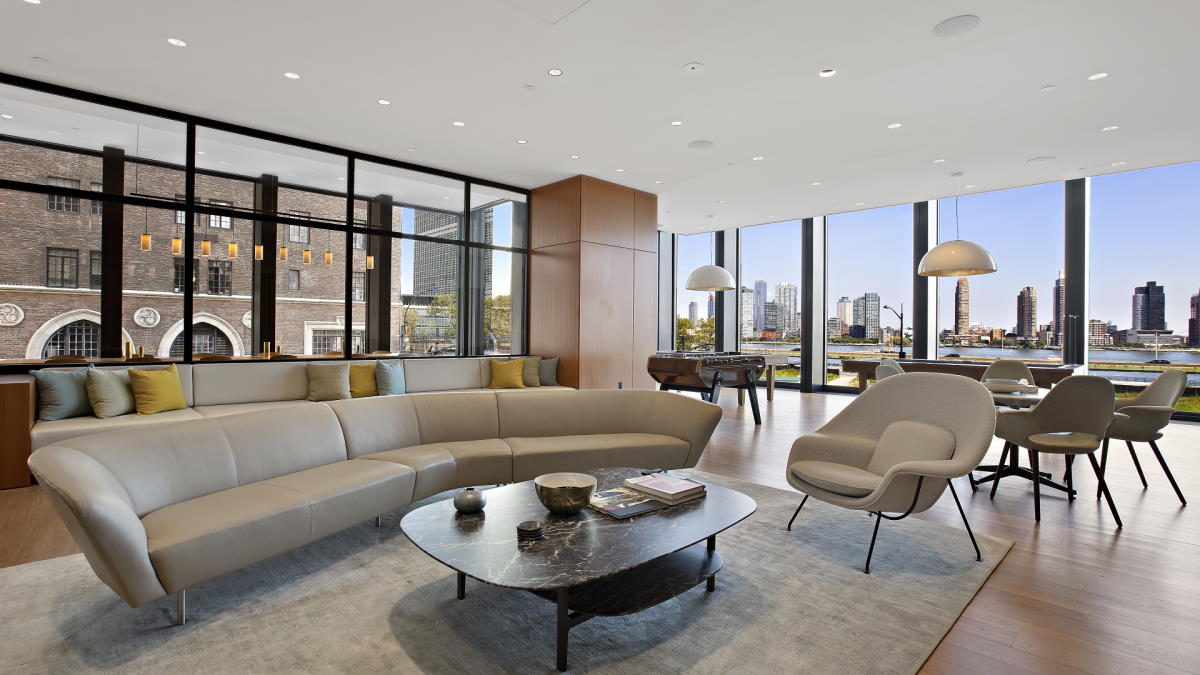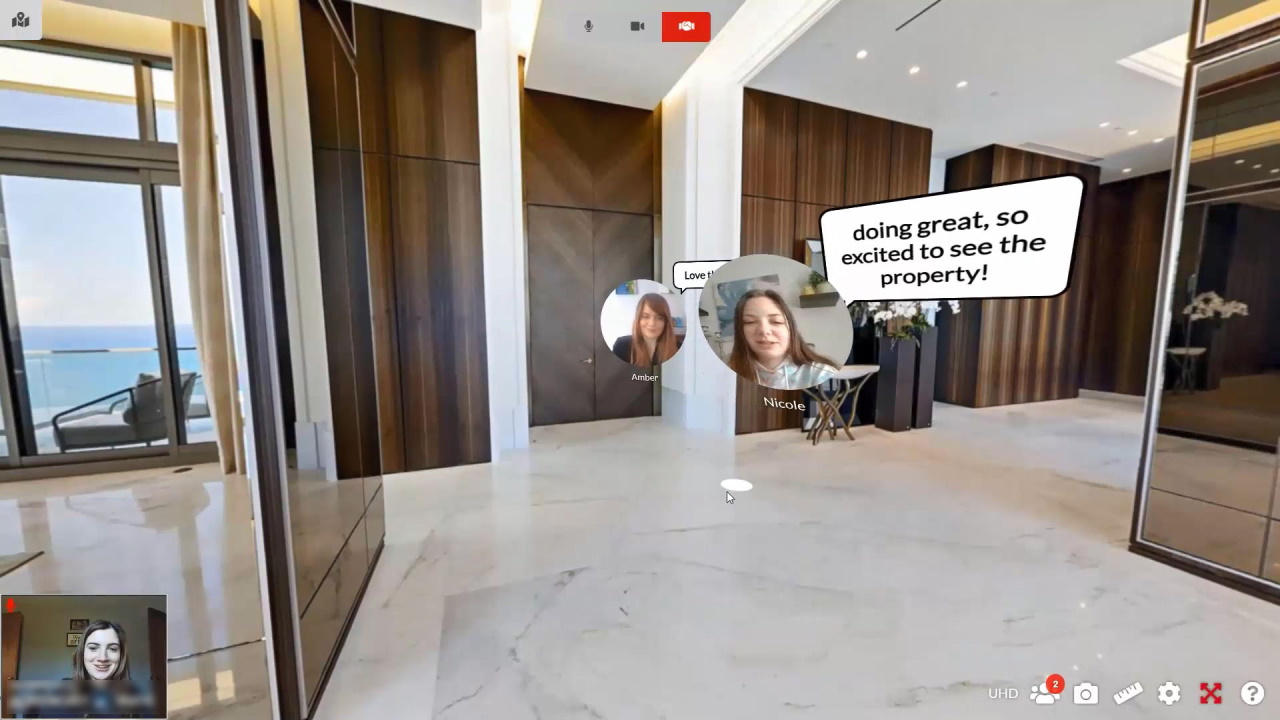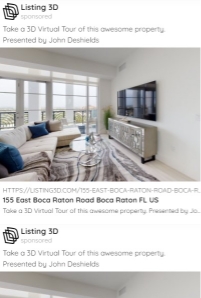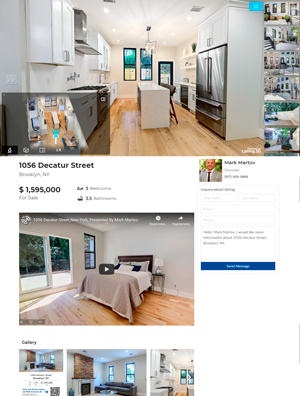How to Do Virtual Tours for Real Estate

Gone are the days when still photos were enough to showcase a property. Today’s discerning buyers crave a more comprehensive view of a home’s layout, and virtual tours deliver precisely that. This showing impacts sales in a significant way — properties with 3D tours command prices as much as 9% higher and close 31% faster.
By leveraging widely accessible state-of-the-art technology, including 3D and 360-degree tours, realtors can create a fully immersive experience that minimizes the need for in-person contact.
Virtual tours are a cost-effective marketing tool. Since it’s possible to record and convert a 3,400-square-foot property into accessible material within 20 minutes, you can save plenty of time while expanding the potential buyer pool.
As a result, prospective homebuyers can now use virtual showings to identify properties that align with their unique style and budget without wasting time and money on commuting.
So, if you’re eager to create unforgettable virtual home tours that will dazzle your clients, you’re in the right place. We’ve put together a comprehensive guide that will walk you through the process — from choosing the equipment to promoting your finished masterpiece.
Planning Your Virtual Home Tour
While snapping photos or shooting videos for a virtual home tour may be a breeze, the preparation requires some brainstorming and physical effort. But don’t fret — we’re here to assist you.
Defining the Purpose and Target Audience
Having a clear understanding of your virtual tour’s purpose and the intended audience will make choosing its content, format, and style far easier. For instance, the purpose may be showcasing the property’s best features or highlighting its investment potential. On the other hand, having a specific audience in mind will help you determine what aspects of the home to focus on (for example, families may be looking for ample space).
Preparing the Property for the Tour
Just because the tour is online doesn’t mean it is less important than an in-person showing. Do a thorough clean-up, remove personal items or clutter, and stage the place so that buyers can visualize themselves living there already. When it comes to lighting, letting the sunshine in is the best option. However, if that is not possible, turn all the lights on and avoid harsh shadows or bright light sources that can wash out the image.
Making a Storyboard or Shot List
A storyboard is a visual representation of the shots you plan to include in the virtual tour, whereas a shot list contains specific information (camera angle, lighting, and location) about each frame. By following these steps, you’ll unleash your creative genius and develop a perfect storyboard:
- Plan the route you will take through the property.
- Identify the key features that you want to highlight in the virtual tour.
- Adjust the shot list or storyboard to ensure each shot appears well-lit and showcases the best parts.
- Capture the property from different angles to provide a comprehensive view of each room.
- Organize your shot list or storyboard by room, with each shot listed in the order you plan to capture it.
Choosing the Right Equipment and Tools
You don’t have to drop big bucks on huge movie set rigs. Instead, you can get yourself a camera, tripods/stabilizers, and virtual tour software (and some audio recording equipment if you feel like splurging).
Cameras
Realtors typically capture virtual tours with 360-degree, DSLR, and mirrorless cameras. We advise you to start with the most convenient one and expand your collection as needed.
360-degree cameras take images in all directions simultaneously and then connect them. They are compact and easy to use; plus, focusing is unnecessary as they are one-click tools. Their price typically ranges from $250 to $500.
DSLR and mirrorless cameras provide superior image quality and greater shooting control. While the former use a mirror to reflect light into an optical viewfinder, the latter rely on an electronic viewfinder (EVF) or LCD screen.
Tripods and Stabilizers
Tripods minimize camera shake and let you frame your shots with pinpoint precision. However, to shoot in motion, you should consider advanced stabilizers like gimbals, which use high-tech motors to keep the camera level and steady.
Audio Recording Equipment
A high-quality audio recording is not always necessary for virtual real estate tours, but it can make a big difference. External microphones record crystal-clear audio and cancel out any distracting background noise, and portable recorders capture audio separately, so you can sync it with your footage during post-production.
Virtual Tour Software and Platforms
Regardless of the brand or model of your 360-degree camera, you need to install a smartphone app or invest in a hosting platform to utilize its capabilities to the fullest. This additional software allows you to upload your photos to a secure platform where they can be stored, edited, and shared.
Some of the best platforms include Ricoh360 Tours, Ogulo, Immoviewer, EyeSpy360, Giraffe360, Matterport, Box Brownie, Kuula, and more.
Shooting the Virtual Home Tour
Before shooting with a 360-degree camera, you should set it on a tripod and open the app or hosting platform. Begin by capturing the exterior from several angles, then move inside. Place the tripod in each room’s center, set the camera at eye level, and take one or more photos per room.
Some realtors prefer filming a video walkthrough or taking shots of the property’s standout features. A video is an excellent option to spice up your virtual property tour because you can edit it to your heart’s content.
Tips for Maintaining Consistent Lighting and Image Quality
Humans are visual creatures, so we all appreciate high-quality, clean images. This is how you can achieve that picture-perfect shot:
- Try to use natural light whenever possible.
- Use a tripod or a stabilizer.
- Shoot in manual mode.
- Make white balance adjustments using a white balance card.
- Avoid using filters.
- Take test photos.
Editing and Assembling the Virtual Home Tour
Virtual real estate tour platforms often come with apps that allow you to upload your files automatically. After the media is uploaded, you can organize and edit it to create a more polished and professional final product.
Stitching and Retouching 360-Degree Panoramas
Software solutions like Immoviewer and Box Brownie will automatically work their magic and stitch your photos together as long as you snap your shots sequentially in accordance with the flow of your home’s floor plan.
On the other hand, Matterport’s software processes property photos into a 3D model automatically and in the correct order. Plus, you can add cool features like tags, label rooms, or embed videos.
For those who have editing skills, Adobe Lightroom and Photoshop offer top-of-the-line tools for gluing photos together and adding those finishing touches.
Editing Video Footage
Trim any unnecessary or unusable footage when editing videos for virtual home tours. Also, make sure to add your clips logically based on the home’s floor plan so that viewers can easily follow along.
To make the transitions between clips smoother and more seamless, utilize fades, dissolves, wipes, or other techniques available in your editing program.
Enhancing Images
Instead of using filters, you should color-correct and retouch your pictures. Color correction adjusts the lighting and colors to make the image more realistic, while retouching removes blemishes.
Adding Audio
Although optional, you can add flair to your tour by incorporating audio, voiceovers, and music. However, remember to use these sparingly — they should complement the visuals, not take away from them.
Publishing and Sharing the Virtual Home Tour
You can reach a wider audience by publishing your tour on multiple platforms. Besides virtual tour hosting services, you can also upload it to realtor.com or various MLS sites or embed the video link in property listings.
Matterport will automatically generate photos and short videos perfect for creating a buzz on social media (Facebook, Instagram, Twitter, and even TikTok).
Text messages and email marketing can also generate new leads. Just don’t forget to make your description catchy, include a link to the virtual tour, and have a call to action.
Tips for Making Your Virtual Home Tour Stand Out
With more homebuyers taking virtual home tours and realtors stepping up their virtual game, it’s essential to show what makes your property unique. Focus on the following:
- Highlighting special features — Use standout features of the property (e.g., a custom-built fireplace, open-concept kitchen) as a selling point.
- Adding hotspots and information overlays — Viewers can click on specific areas of the home for a close-up or information regarding its history, renovation, or maintenance.
- Using storytelling techniques — Create a narrative that helps clients envision themselves living in the home.
Measuring the Success of Your Virtual Home Tour
By tracking viewer engagement and analytics and seeking feedback from buyers and other realtors, you can determine the success of your virtual real estate tour.
The analytics will show how many people are watching your tour, for how long, when they drop off, and which areas get the most attention. You can even ask for feedback on social media, by email, or by sending surveys.
Don’t leave it at that, though. Adjust your strategy based on performance insights. You may need to improve the introduction if viewers stop early in the tour or consider changing the format if you’re not receiving positive feedback. After all, mistakes — and constructive criticism — are the best teachers.
Conclusion
Virtual home tours have become essential in the real estate industry, especially during the pandemic. A successful virtual tour requires assessing your audience, preparing the equipment and space, and letting creativity shine during filming. With editing, you can achieve seamless and professional content, while marketing the tour allows you to reach a wider audience and increase sales and leads.
As you can see, real estate virtual tours are powerful marketing tools for realtors and are a must if you want to stay on top in the current real estate market.
Additional Services
Take Your Marketing Even Further






Additional Features at no cost
Part of any package












